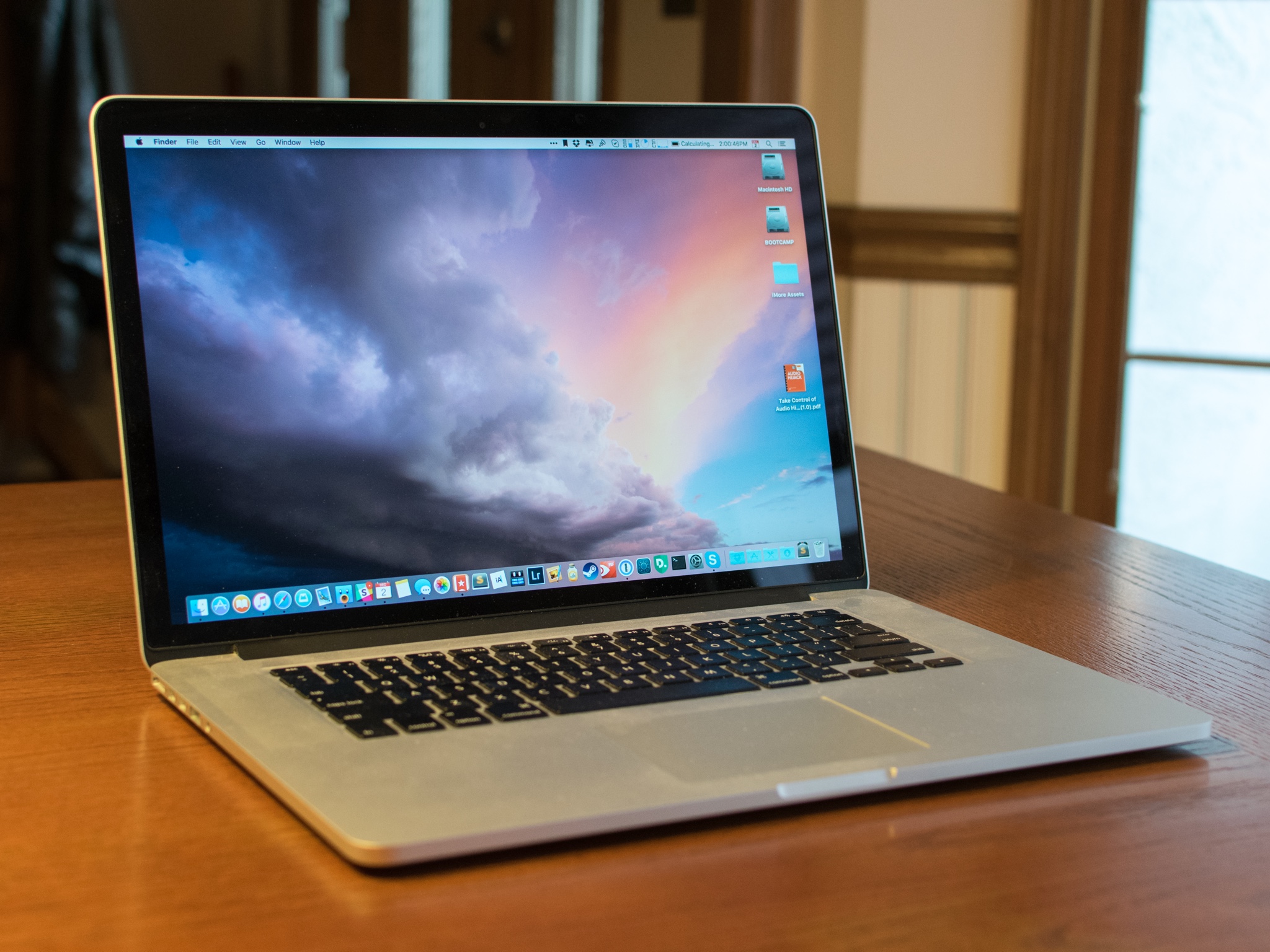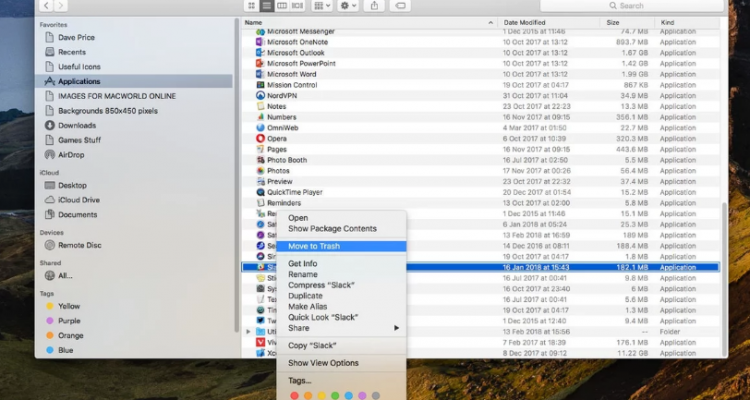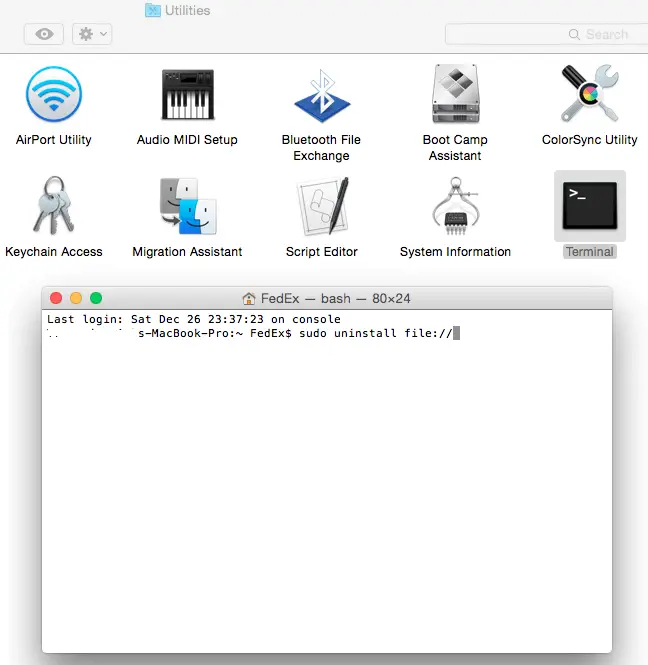- How To Remove Apps From Mac Pro Laptop
- How To Remove Mail App From Macbook Pro
- How To Remove Apps From My Mac Pro
By Tasnia Salinas, on January 26, 2020, in Mac Uninstaller
- Removing programs from a Macintosh can be very easy. In many cases, all you have to do is drag the application's icon to the Trash. Sometimes, though, applications store the files they need to run in other locations on your computer's hard drive, and finding them can take some detective work.
- How to Uninstall apps on Mac Permanently Delete Application on Mac SUBSCRIBE for new videos every week!
- USP: Free Mac Uninstaller To Delete Useless Apps, Widgets, Preferences, Panes, Plugins etc. Latest Version: 3.2.9. AppDelete is a fantastic program to uninstall apps on Mac. Along with this, the uninstaller for Mac can also remove widgets, preference panes, plugins, and screensavers. Moreover, the app also gets rid of the leftover files of the.
- Uninstall an app. Click X from the top-left corner of the unwanted app’s icon (PDF Reader Pro Free for this example), and click Delete in the confirmation box. This uninstalls the app from your Mac. Once done, you can follow the method explained earlier to remove its icon from the Dock as well.
Click on 'Chrome' in the top menu bar. Select 'Clear Browsing Data' from the dropdown menu. A new page should open with a pop-up window saying 'Clear browsing data' at the top.
How to get started?
In this article, we help you to learn 3 Ways To Delete Unwanted Apps on MacBook Air/MacBook Pro by using our dedicated Mac App Uninstaller software - Omni Remover. Make sure you have downloaded the latest version here before continuing.
Apple last week introduced an all-new MacBook Air, bringing a stunning 13-inch Retina display, Touch ID, the latest processors and an even more portable designs. The new MacBook Air is available in three colors - gold, space gray and silver (App Can't Be Opened Because Apple Cannot Check It for Malicious Software.). Beyond that, the all new MacBook Air also includes an Apple-designed keyboard, a spacious Force Touch trackpad, faster SSDs, wide stereo sound, making the new MacBook Air the perfect notebook to take with you everywhere you go.
In this quick guide, we'll show you how to delete your unwanted applications from your MacBook Air, so that you can keep your Mac fit and away from bloated hard drive (Learn How To Uninstall MacKeeper Mac).
Method 1: How To Delete Unwanted Apps on MacBook Air - from LaunchPad
You have three ways to download/install apps on your MacBook Air, from the App Store, from other websites, or from CD discs. To delete apps downloaded from the App Store: Click Launchpad on the Dock of your MacBook Air > find the app you want to delete > press and hold until all the app icons begin to jiggle > then click the Delete button to remove it from your MacBook Air (Learn How To Uninstall Spotify Mac).
Method 2: How To Delete Unwanted Apps on MacBook Air - from Applications Folder
macOS organizes files on your MacBook Air/MacBook Pro in folders. You can see all of the folders in the Finder. Applications is one of these folders that contains apps, including Mail, Calendar, Safari, and many others. You can delete your downloaded apps by dragging it from the Applications folder to Trash folder. Here are the detailed steps (Learn How To Uninstall Office Mac).
- Step 1: To properly delete apps from MacBook Air, open Finder > Applications > Choose the apps that you want to delete from your MacBook Air:
- Step 2: After deleting the app, there are still app related preference settings, app running/crashing logs, and other 'Hidden' application components. To completely remove all these application leftovers, you need to move further: Open Finder > in Menu, click Go > enter.
- Step 3: You may see a large amount of system file folders here. Now locate the application leftover files by digging into each folder. They are possibly stored in the following folders: Application Support | Caches | Containers | Frameworks | Logs | Preferences | Saved | Application State | WebKit
- Step 4: Drag the files associated with your deleted app to Trash > Empty Trash and restart your MacBook Air to finish the removal of your application.
Method 3: How To Delete Stubborn or Bloated Apps on MacBook Air - Omni Remover
This manual way to delete applications from MacBook Air is a nightmare because the amount of the steps and numerous folders/files are involved. Omni Remover is one of the most advanced Mac App Uninstaller program, which makes the application removal procedure extremely easy. Here are the detailed steps on how to completely delete applications on MacBook Air (What Is Other On Mac Storage).
Step 1:
Click here to download Omni Remover (Ready for the latest MacBook Air and macOS Catalina) > Install and Open Omni Remover on your Mac.
Step 2:
In Omni Remover > App Uninstall > Choose the application name that you want to delete > Clean Uninstall.
Step 3:
Then Omni Remover will start scanning all app data/files > After it finished scanning, click Clean Uninstall to start deleting this application from your MacBook Air.
Have you successfully delete your unwanted applications from your new MacBook Air with our suggestions above? If you still have problems, feel free to drop us a line in our Contact page. Before leaving this page, make sure you have downloaded Omni Remover, which is capable of removing stubborn applications on Mac easily and cleaning up all app cache junks in one click. Give it a try here: Free Download Now >
Omni Remover
Version 3.3.8 (January 26, 2020) / Support macOS Catalina
Category: Mac Uninstaller
Quick question – how do you uninstall programs on Mac?
If your answer is to drag the app to the Trash, we’re sorry to say that you’ve been doing it wrong.
You probably know or guess that you can remove apps by dragging them to the Trash bin, but it is not quite so. Dragging normal files like documents and movies to the Trash works fine. But doing the same for apps leaves gigabytes of leftover junk files on your hard drive. We’re going to show you what gets left behind and what you can do to completely uninstall apps from here on out.
How to uninstall on Mac
If you are trying to delete an old application, reinstall a corrupted software or just free up disk space on your Mac, removing all components of the program is important. These include the app, its preferences and support files, and sometimes other hidden files.
To completely uninstall a program on Mac you have to choose one of three options:
- Using Trash.
- Using Launchpad.
- Using a native uninstaller
The ways mentioned above include navigating your Mac’s in search of the apps you want to remove and then locating their remaining data. The latter can take even more place than the app itself and can be stored anywhere in your folders.
I prefer clearing my Mac from apps using special software made for this particular task - CleanMyMac X. It’s Uninstaller feature, is an app-killer that sweeps away any program you don’t want on your Mac and clears remaining junk.
Now let’s go ahead and delete some apps!
1. Uninstall Mac apps using Trash
Whether you're running macOS Catalina or an earlier macOS, like Mojave or Sierra, the process of manually uninstalling remains relatively similar. Here’s what you need to do:
- Open Finder.
- Go to Applications.
- Choose the app you want to delete.
- Press Command + Delete (⌘⌫).
- Open Trash.
- Click the Empty button in the upper-right corner of the window.
And the app is gone.
Even uninstalling apps on macOS Catalina requires getting rid of leftovers, despite the fact that it's the latest and the most sophisticated system for Mac. Apple has done such a good job on macOS 10.15 but left this unfortunate issue unresolved for another year.
To completely remove programs from Mac manually, you have to find all the associated files that come along with the app. That means not just dragging the app icon to the Trash from your Applications folder, but searching the depths of the system files on your Mac.
We’re going to reveal the locations of the most common files that are associated with apps. To remove the app leftovers from your Mac just navigate to each of these folders and hunt for the app you want to remove. If you find files with the app name you can send them to the Trash.
So, when uninstalling any software, you have to go over each of these folders one by one and remove the following:
- Binary and dock icons are located in
/Applications/ - Application support files are located in
~/Library/Application Support - Support Caches can be found in
/Library/Caches/and~/Library/Caches - Plugins are located in
~/Library/Internet Plug-Ins/ - Library can be found in
~/Library/ - App preferences are located in
~/Library/Preferences/ - Crashes are found in
~/Library/Application Support/CrashReporter/ - App saved states are located in
~/Library/Saved Application State/
There are many more hidden files, some of which cannot be accessed by the user. And macOS/OS X will prevent you from deleting some app files.
As you can see, it's not that easy to uninstall applications Mac doesn't need, even when you know what to do. By the way, be sure to look for the name of the app in the file names of the files you remove. Don’t remove anything you don’t know! Do your due diligence before removing something from your system.
When you delete software on Mac manually, be sure only to remove an app file or folder when you’re sure of what it is. Look at the name very carefully before you nuke it. Removing the wrong files could cause problems with your system.
Remember, please be careful when deleting system files — you never know how it will affect your Mac if you remove the wrong ones (or the right ones for that matter!).
2. Uninstall Mac programs with Launchpad
How to uninstall on Mac by using the Launchpad? It's easy and this manual method works like this:
- Click Launchpad icon in your Mac's Dock.
- Find the app you want to delete.
- Click and hold the app until it starts shaking.
- Click X in the top-left corner of the app icon.
- Click Delete.

This will uninstall the app from your Mac. However, keep in mind that after removing the program, you should also delete its leftovers as we've described above.

Can't delete apps on Mac?
Unfortunately, manual methods won’t get everything. Some apps are pre-installed macOS components and protected by the system while others will refuse to delete because they are already open (even though that’s often not true).
So, how to delete the apps on Mac that won't delete? You can try the manual removal after force quitting the app in question (press Command-Option-Esc and if the app is on the list shut it down) or rebooting your Mac.

If you're still unable to delete apps on Mac or if you’re worried you won't do it correctly and want a safer alternative, there’s the easy method of uninstalling apps from your Mac so you don't have to force delete applications. It actually does a better (and safer) job and in a fraction of the time. Read on to learn how to delete apps on Mac automatically.
3. Uninstall apps with CleanMyMac X
When I referred to the easy method of uninstalling apps, I meant using CleanMyMac X. As for me, deleting apps is a pretty tiresome task. I’ve always put away this chore, as it will waste a huge amount of my time. But, my Mac was running low on free storage, so I decided to try CleanMyMac X to fix this problem and uninstall programs on Mac with ease. I used the Uninstaller module to get rid of multiple apps at once. Here’s what you need to do:
- Download CleanMyMac X, install, and launch it (it takes less than a minute).
- Go to Uninstaller.
- Choose All Applications.
- Check the boxes next to the app you want to remove.
- Press Uninstall.
As you can see, CleanMyMac X shows precisely how much place each app takes, so it’s easier to detect the heaviest programs. Another benefit is that you can bulk uninstall programs on Mac without dragging each app and its files to the Trash.
Is it possible to delete system files on Mac?
CleanMyMac X doesn’t let you delete system apps like Safari. Neither of Mac cleaners can do that. But, CleanMyMac X allows you to delete the data associated with system apps and reset them completely. Click CleanMyMac X’s menu in the upper-left corner and choose Preferences. Go to Ignore List and click Uninstaller. Here uncheck the box next to “Ignore system applications.”
Now, you can close Preferences and go back to Uninstaller. Click ► next to the app's icon to show its files. Then check the data you want to delete and choose Reset from the drop-down list next to the app’s icon. Then press Remove.
It will help to clear some space on your Mac. Note that your app logs may also disappear after the reset.
4. Use the native uninstaller
How To Remove Apps From Mac Pro Laptop
Many applications are designed to clean after themselves. They come with a built-in uninstaller — a self-destroying utility bundled with the main app. This is mostly true for third-party apps that you download from the internet. That’s why native uninstallers remain more of a Windows thing, not much heard of in the Mac world.
The original uninstallers can be found in Finder > Applications. If your app looks like a folder (within the Applications folder) most likely it will have a separate uninstaller. The name will read [Your app] Uninstaller or Uninstall [Your App].
How To Remove Mail App From Macbook Pro
Open the folder, find the launcher, and just follow the onscreen instructions. After the removal is complete, you can enjoy your extra storage space!
Clear app leftovers: preferences files and caches
No sane developer wants people to delete their application. As your desperate ex, they would do everything to stay on your Mac, like planting pieces of their software around your Mac so one day they can return. Support files, preference files, and caches — all these will likely remain even if you’ve deleted the app itself.
Here I’ll show you how to root out these remaining traces. I’ll use the Telegram app as an example.
Delete application support files
Click on Finder > Go to Folder… (in the upper menu).
Paste in: ~/Library/Application Support/Your App Name
In my case it's: ~/Library/Application Support/Telegram
Now, delete the content of this folder.
Delete application Preferences
The Preferences folder contains your user settings. These files are tiny but there’s no reason not to delete them, just out of principle.
Click on Finder > Go to Folder…
Paste in: ~/Library/Preferences/
Open the folder. Now type the name of your app in the search bar. Click to search 'Preferences.” Delete the found items.
Delete the caches
In the same vein, you’ll have to delete the remaining app caches.
This time, use the following command to paste in Finder > Go to Folder...
Paste this: ~/Library/Caches/Your App Name
How To Remove Apps From My Mac Pro
Note: In some cases, you need to search for the app developer's name, rather than the name of the app.
Delete leftovers with CleanMyMac X
If you’ve been doing a 'spring cleaning' in your Applications folder, chances are some files are still left somewhere in your Mac’s system. CleanMyMac X detects and collects them into the Leftovers tab.
Go to Uninstaller once again and select Leftovers. Select all the remaining files and press Uninstall to say goodbye to the app remains.
Now you are just as good at uninstalling applications on Mac as any Apple engineer. Hopefully, you now have plenty of free space. Don't miss a few related articles below.